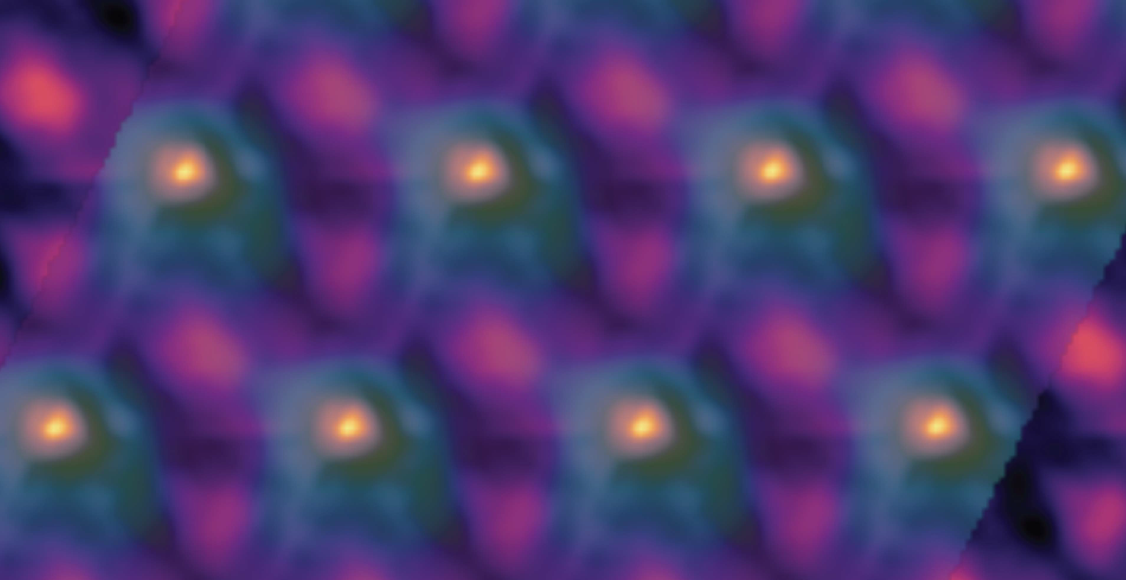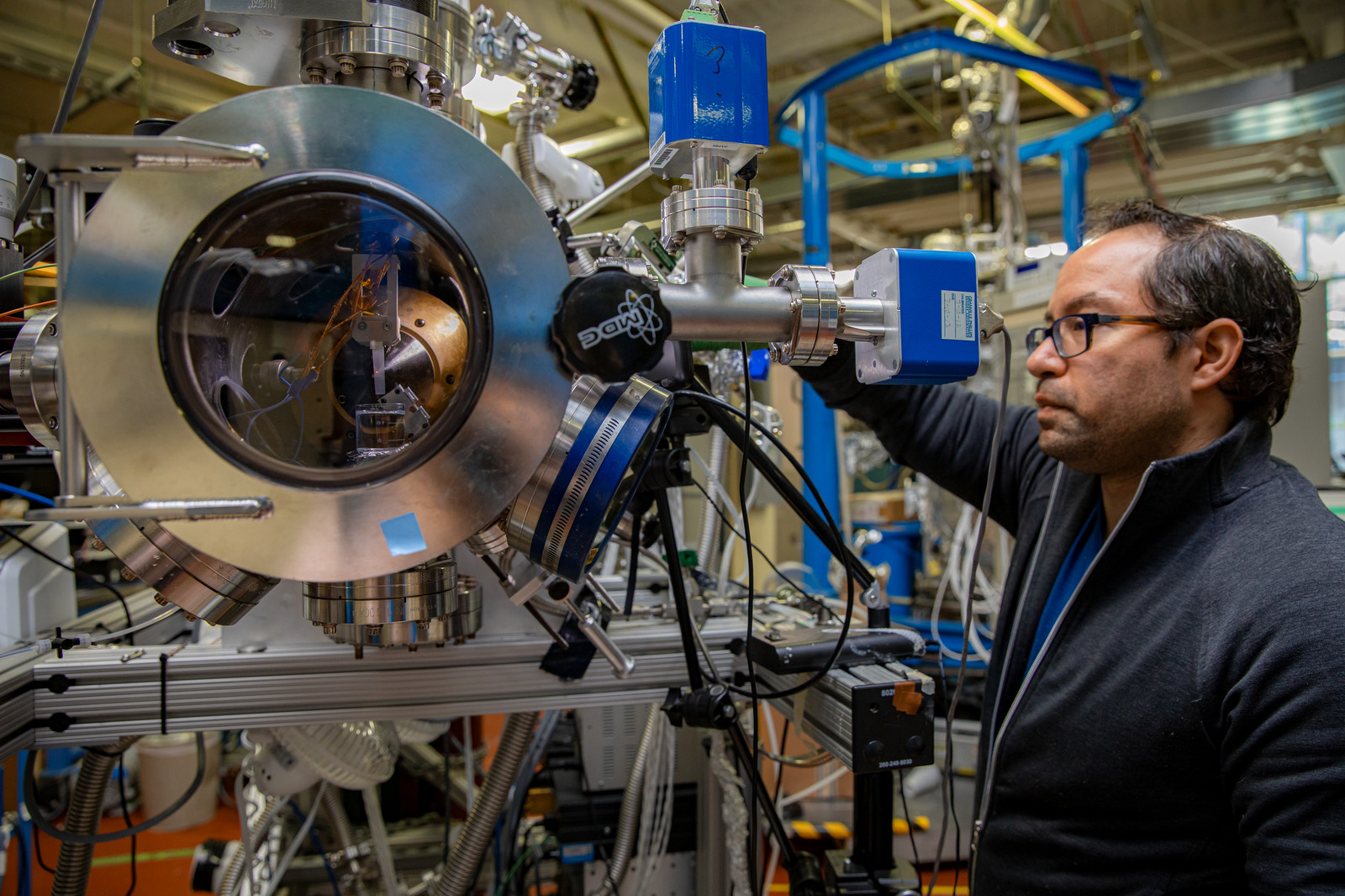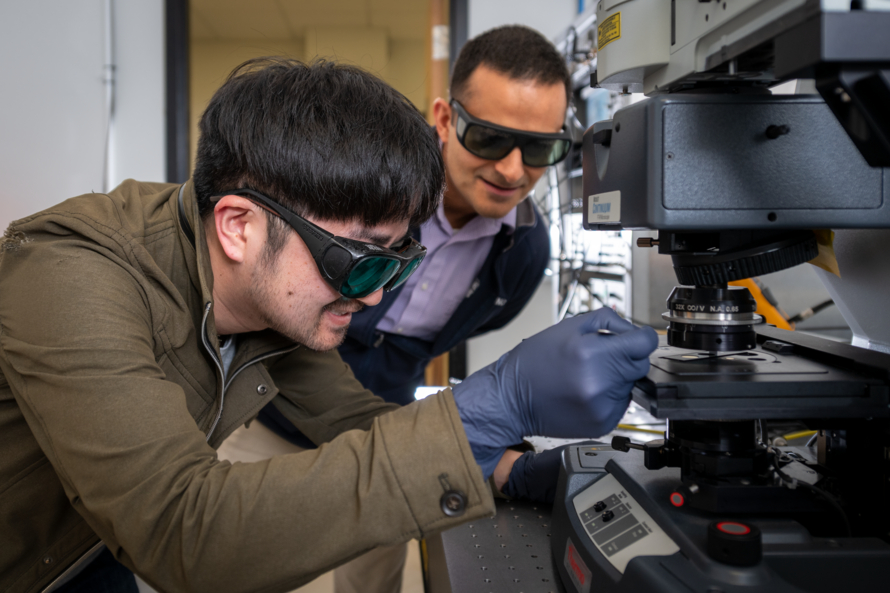Energy efficient LEDs (light emitting diodes) have begun to replace many types of lighting both indoor and outdoor. A key reason for the rise of LEDs has been materials research that greatly improved the quality and intensity of light achievable with these devices. But those materials must be handled with very high levels of precision, including surfaces that are as defect-free as possible.
“They’re more efficient and last longer,” said Lawrence Berkeley National Laboratory (Berkeley Lab) Senior Faculty Scientist Ali Javey, of the materials that comprise today’s LED devices, “but to get good efficiencies, you really have to treat the [material] surfaces to perfection – you have to watch and control the surface chemistry and even then, you still have some light losses.” Javey is also a professor of electrical engineering and computer sciences at the University of California, Berkeley.
Javey and his team said their recent research on black phosphorus (BP) – a material of interest for its electronic properties – reveals a tantalizing capability for light emission at the BP surface.
It turns out that extremely thin layers of BP can be stimulated to emit useful quantities of light in specific wavelengths. What’s more, it will do so without regard to the surface. In fact, they can even let BP oxidize (think rust) and it will still emit light in the mid infrared (IR) without any loss of efficiency.
“We don’t do anything special to the surface. We don’t do any special chemistry. We don’t put down any special protection layers,” he said.
The Javey team published their findings in the journal Nature Nanotechnology.
The work is both a fundamental discovery about the properties of BP, and it suggests exciting prospects for applications.
“Black phosphorus is really good for midwave IR light emission and detection,” Javey said. “Our group and others have shown very bright midwave IR LEDs before. Mid-IR LEDs using conventional semiconductors are not very efficient due to fundamental materials properties. BP has an inherent advantage in that wavelength range.”
The mid-IR range is of interest for applications in night vision, sensing, spectroscopy, and more, Javey continued. “Our findings emphasize the unique material characteristics of layered materials for novel optoelectronic applications such as light-emitting devices and photodetectors.”
“Our findings emphasize the unique material characteristics of layered materials for novel optoelectronic applications such as light-emitting devices and photodetectors.”
–Ali Javey
Getting Light from Thin Black Phosphorus
The Javey lab has been investigating the “magical properties” of BP for some time. In 2022, they reported that, under mechanical strain, BP can be induced to emit or detect infrared (IR) light dynamically in a range of desirable wavelengths – 2.3 to 5.5 micrometers, which spans the short- to mid-wave infrared – and to do so reversibly at room temperature.
“In this new paper, we look at how the light emission mechanism changes when we change the thickness of BP,” said co-author Shiekh Uddin. In thick units of BP, electrons and holes – that is, negatively and positively charged particles – can generate light when they collide with each other.”
Thinned below a few nanometers, however, the electrons and holes at the BP surface are so confined that they combine like magnets drawn together in a pocket. This excited state, called exciton, emits the light more efficiently than isolated electrons and holes.

“Importantly, we find the surface is less detrimental to the luminescence efficiency owing to the inherent crystal structure of BP,” said co-author Naoki Higashitarumizu. It turns out that BP has an unusually low surface recombination velocity. That is a measure of how quickly carriers — electrons or holes — are lost on the material’s surface without generating light.
In fact, the surface recombination velocity of BP is two orders of magnitude lower than for other materials, Uddin said. This is true even when the surface has been oxidized or damaged due to environmental exposure. As a result, we can achieve bright-light emission even when BP is made very thin.
Moving forward, Javey said, “We believe the low surface recombination is not limited to BP but should also be applicable to other layered materials with similar crystal structures.”
Berkeley Lab Faculty Scientist Eran Rabani, who is a UC Berkeley professor of chemistry; along with graduate research assistants Daniel Weinberg, I. K. M. Reaz Rahman, and Vivian Wang, also contributed to the work. Other coauthors include researchers from the University of Melbourne, Australia.
The research was supported by the Department of Energy’s Office of Science.
For information about licensing this technology, contact [email protected].
###
Founded in 1931 on the belief that the biggest scientific challenges are best addressed by teams, Lawrence Berkeley National Laboratory and its scientists have been recognized with 16 Nobel Prizes. Today, Berkeley Lab researchers develop sustainable energy and environmental solutions, create useful new materials, advance the frontiers of computing, and probe the mysteries of life, matter, and the universe. Scientists from around the world rely on the Lab’s facilities for their own discovery science. Berkeley Lab is a multiprogram national laboratory, managed by the University of California for the U.S. Department of Energy’s Office of Science.
DOE’s Office of Science is the single largest supporter of basic research in the physical sciences in the United States, and is working to address some of the most pressing challenges of our time. For more information, please visit energy.gov/science.



